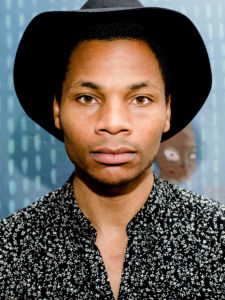 Sooner or later, all families must reckon with the ghosts of their own history, with the ancestry that binds each member to each other and defines them all. For black American families, the natures of these ghosts are peculiar, their ancestry mythic and complex, full of holes and unresolved memories. All of us possess, are possessed by, these stories.
Sooner or later, all families must reckon with the ghosts of their own history, with the ancestry that binds each member to each other and defines them all. For black American families, the natures of these ghosts are peculiar, their ancestry mythic and complex, full of holes and unresolved memories. All of us possess, are possessed by, these stories.
In Angela Flournoy’s The Turner House, readers reckon with what happens when one family (black, Detroiter, fruitful, working class) encounters this fundamental ground of black American identity. It begins in 1958, in a house that is more than a house. Cha-Cha, a boy, the eldest of thirteen children, sees what he thinks is a ghost—a haint. Some of his siblings see it too, or say they do, as adoring younger siblings are wont to do. It’s hard to say what happens.
But their father, Francis, closes the inquiry with a loaded declaration: “Ain’t no haints in Detroit.” From here the story moves, weaving into and through the lives of all the Turner clan, focusing mostly on Cha-Cha, their mother Viola, and the youngest, Lelah. We go from 1958 to 1944 to 2008 and back and through again, following interwoven stories that remind us that the past never ceases. Ancestors (and earlier selves) persist, and sometimes bump right up against one another. As they play out, the reader is led to understand that in these narratives lies the essential crisis of contemporary American society: what to do when the past catches up to you?
It is one thing to show that the home ownership disaster in Detroit relates to the drug epidemic in black communities and to place that within the context of a narrative on social change; something else to relate this to a crisis in mental health. It’s another thing altogether to perceive that a crisis in mental health is a crisis of epistemology, of how we come to know what we know about our world. With The Turner House, Flournoy succeeds in this and takes it further by gracefully laying out the essential details of her own epistemic vocabulary, so that in the Turner clan a reader can sense the groups of which the Turner clan is an echo. Flournoy’s text moves through and in these considerations, rewarding the careful reader with contextual structures through which we may reconsider what it means to be black and American in our time, and to consider with sounder eyes what can happen when the past encounters and immerses the present.
In her 1984 essay, “Rootedness: The Ancestor as Foundation,” Toni Morrison argues that it is an essential though general quality of black American literature that ancestors show up in narratives as sources of guidance. She notes that in her own work the ancestor character, such as Pilate in Song of Solomon, works to ground the characters in solid identities. She shows that Pilate illustrates that “if we don’t keep in touch with the ancestor…we are, in fact, lost.” Beyond the characters they create, Morrison notes that black authors tend to express particular relationships with ancestors. Richard Wright and James Baldwin, she tells, had great difficulty and were confounded by the ancestors in their work. Because the black author is part of a community and a tradition rooted in communal approaches to expression, it is no stretch to read, in the author’s relationships with the ancestors, the ancestral relations of those black communities for whom and of whom they write. After all, what is a haint if not an ancestral spirit? What is a ghost if not a body, gone, returned to bring instruction—or at least to draw attention?
In The Turner House, Flournoy’s literary ancestors loom. In how it executes black literary archetypes such as the ghost memory or a particularly black male crisis of history, one senses the guiding hand of canonical texts. It is not difficult to see, somewhat spectrally, the influence of Morrison’s novels. Shades of Paradise, Song of Solomon, and Beloved lend more than incidental tones, as they share a root meditation on the crises history wreaks on the black soul. Flournoy’s text is in conversation with these works and, through them, with works in the wider black American literary canon that circulate around families seeking to understand themselves or those of individuals seeking to understand themselves in the context of their families. The quality of imagination some critics have called “magical” in this work I perceive as organic; it brings to mind the works of Edwidge Danticat, among others. The literary ancestor most explicitly evoked is Zora Neale Hurston, whose Mules and Men Cha-Cha finds after “the Internet told him [it] mentioned both black folks and ghosts.” As to his purpose for getting the book, Cha-Cha elaborates no further. But like Hurston herself, the book serves its own purposes, connecting him to the ways of an earlier, rural, Southern time and immersing him in its epistemic vocabulary.
In the same essay, Morrison notes that our time can be characterized by an emergent conflict between the public and the private spheres. “Not a problem, but a conflict”—a failure to jive, rooted in the tension between apparent opposites. Just such a conflict develops in The Turner House, where Cha-Cha’s primary trouble stems from whether he is to believe that what he sees is a haint or a malfunction of his mind. If what he sees is real, he can’t be alone in seeing it. He seeks validation in the social: his siblings, his parents, his wife, must believe and see it too. This need for belief and corroboration conflicts with the notion that the haint is no more than a hallucination, a private disorder borne of mental illness—a notion supported by Alice, an enigmatic shrink Cha-Cha starts to see after an accident in which the apparition…appears. It’s up to the reader to determine who, if anyone, deserves to be trusted. But in the tension this crisis of trust evokes, the public—his family, his wife’s church, the groups to whom relatively communally-oriented people (such as those from whom Cha-Cha descended) look for structure and order—opposes the private sphere, territory of the capitalist West, where phenomena formerly understood as possessions and hauntings are now rearticulated as personal or chemical disorders. This Du Boisian double consciousness of a conflict plays out in Cha-Cha’s psyche. In his struggle one can also read the spectral struggle of a people on the verge of an age marked by the tenuous concept of hope and the inevitable tensions and backlashes borne of the American identity crises in race and history it catalyzed:
Speak something into existence. Give it a name and give it life. Had Cha-Cha done this? Did he believe this could be done? Certainly not after so many years of relative peace, and not as quickly as it was happening.
There was someone, something, sitting on the windowsill in Cha-Cha’s bedroom.
This is how it begins. A moth-like sound, and a light too blue in a corner of your bedroom. If you ignore it, it does not exist. But speak its name and you’ve invited it into your mind. Like hearing voices, or seeing the face of Christ in a freshly laundered shirt. What happens cannot be manipulated, refuses to be controlled. But what we acknowledge as having occurred, what we tell others, can metastasize, grow ubiquitous overnight. [135]
My mother was born in 1961, the ninth of thirteen children. Her parents left the wide fields and small farms of rural Georgia in search of stable work and the hope of a world with no Jim Crow. As is the case with so many migrants swept up in the history of a self-interested nation, they found more and less than they had imagined. They settled in upstate New York. They persisted through history and bore the stories to prove it. And then they, child of migrants, migrated back to the South in search of community and safer streets for their children to grow up in.
On our cross-country drives back to her childhood neighborhood, my mother would share the stories of her youth, those she’d learned and those she’d experienced. Vietnam, drugs, root work, violent tales wrinkled by magical humor—these I treasured as my inheritance. The stories of our family were and are the stories of a people in movement between generations, across states, seeking what all people who lack them seek: a sense of belonging, a place to call home. Flournoy’s exceptional first novel is a reminder that such stories are both archetypal and living, in the middle of being told. Such stories are still learning themselves, still gathering the language and the images to name what has happened to us.
As we sit in the twilight of this first black Presidency, we are just beginning to see what these past years have meant to a longer story, a story the nation’s ghosts will not allow us to forget. Flournoy’s novel concludes in the recent past, a past already churning in the centrifuge of the historical. The reverberation of this past (as alluded to in the novel’s final thoughts, final word) encourage us to consider the means by which a moment becomes ancestral, how momentous our time must be, how the ancestors must now be speaking, and to whom and what in the world we have to look forward.
Source: Morrison, Toni. “Rootedness: the Ancestor as Foundation.” Originally in Black Women Writers, 1950-1980, edited by Mari Evans. New York: Anchor Doubleday, 1984. 339-45.
 RJ Eldridge is a multidisciplinary artist, writer, documentarian and educator. His current projects inquire about time, the contemporary black avant-garde and yearning in a shifting moment. He lives and works in Chicago and tweets sporadically from @RJ_EL. Find out more about his work at whoisrjel.com.
RJ Eldridge is a multidisciplinary artist, writer, documentarian and educator. His current projects inquire about time, the contemporary black avant-garde and yearning in a shifting moment. He lives and works in Chicago and tweets sporadically from @RJ_EL. Find out more about his work at whoisrjel.com.
